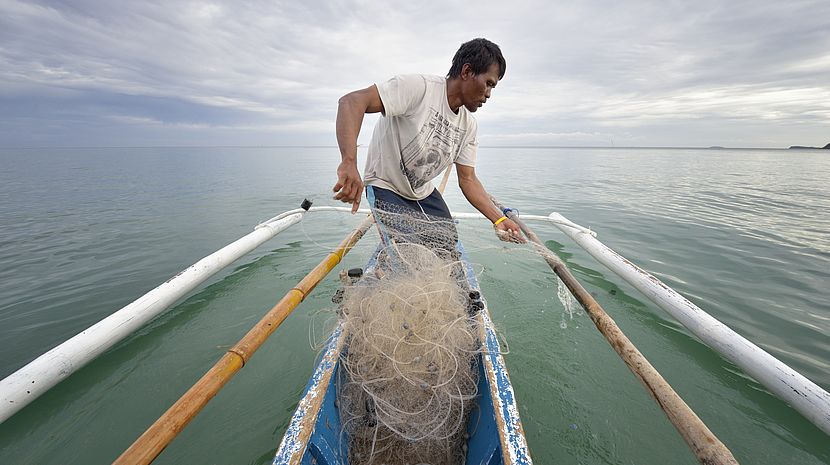04.11.2016 World Tsunami Awareness Day and Persons with Disabilities

I had the honor to present at the side event at the United Nations on 3 November for the first annual World Tsunami Awareness Day. The event was co-hosted by the United Nations Office for Disaster Risk Reduction (UNISDR), the Permanent Missions of Chile, Indonesia, Japan, and the Maldives to the United Nations.
Tsunamis are important to address since it is estimated in the past 100 years that at least 58 tsunamis have killed more than 260,000 people globally (UNISDR, 2016). The Sendai Framework, which was agreed in March 2015, provides the guidance to develop multi-hazard disaster risk reduction strategies (DRR) and strongly includes persons with disabilities.
As the only civil society presenter at the event, I was pleased to be able to give an intervention on behalf of CBM International and our Inclusive Emergency Response Unit and their stellar work with local partners to ensure that persons with disabilities are included at all levels of disaster preparedness and response. My presentation and the longer version for this blog were co-written by ERU’s Gordon Rattray. Thank you, Gordon, Valerie, and all of the ERU team!
I would also like to thank the Missions of Indonesia, Japan, and Ecuador for explicitly addressing accessibility and the inclusion of persons with disabilities in early warning systems and other DRR processes at the event.
How are persons with disabilities affected by tsunamis differently than other parts of community?
Fifteen percent of the global population has a disability. In any emergency or disaster, persons with disabilities are disproportionally affected and are at significantly higher risk than their peers without disabilities in times of a disaster. Recent figures from Miyagi prefecture following the Great East Japan earthquake indicate that the general mortality rate was 0.8% versus the mortality rate for persons with disabilities, which was 3.5% (UNESCAP, 2012). Reasons for this include inaccessibility of early-warning messages and emergency shelters, loss and damage of assistive devices, disruption of support networks, lack of communication and information access, and increased difficulty in accessing basic humanitarian operations (food, water, shelter, sanitation, and healthcare services). At the same time, emergencies can increase the number of people with disabilities, both short and long-term, due to injuries and lack of effective medical services.
In tsunamis, some degree of early warning will usually, but probably not always, be possible. The issue is that if the Early Warning System (EWS) is not accessible, it is very likely that persons with disabilities will not receive the vital information. For example, Deaf and hard of hearing people may not hear audible warnings, blind and low vision people may not see visual messages and various language considerations may be relevant for people with intellectual disabilities (and for anyone who is not a native speaker of the language being used).
If evacuation is possible, lack of accessible transportation and moving with a physical disability can be challenging. At an evacuation center there are myriad issues, such as lack of accessibility of restrooms, general accessibility of areas, lack of communication access (sign language and Braille), and people being lost and/or separated from their support networks.
Later, for people who survive the tsunami, accessing basic needs (often for survival) like clean drinking water, shelter, food and medical care are often difficult or impossible. At the same time, persons with disabilities may have lost items essential to their ability to function independently (wheelchairs, hearing aids, canes) or have been lost and/or separated from their support networks. Additionally, post-tsunami roads, sidewalks, and pathways can be obstructed by debris. And safety/security issues increase as well, including increased exposure to looting/robbery/assault, the latter being particularly an issue for women and girls with disabilities.
What role are persons with disabilities playing now in reducing disaster risks?
Persons with disabilities are active participants in planning, implementation, and monitoring of reconstruction efforts. When persons with disabilities are considered not only recipients of aid, but as equals and are involved in relief efforts as active responders, their communities and society as a whole will benefit.
There are similarities between tsunamis and flooding and the following is an example of how persons with disabilities can be actively involved in DRR efforts to create positive change. One of CBM’s partners, the Center for Disability and Development (CDD) in Bangladesh assessed the region of Sreepur Union and found that 97 percent of persons with disabilities faced difficulties accessing safe drinking water and 96 percent had extreme difficulty in using latrines during floods.
The CDD project supported 18 persons with disabilities from six wards in the region to reconstruct accessible and flood-proofed housing with latrines and tube wells designed to continue functioning during flooding disasters. To ensure sustainability, families were encouraged to make the person with a disability owner of the land or at least part of the house to reduce stigma.
The cost of one flood-risk universally accessible house along with installation of one accessible tube well and latrine was approximately $1212. In partnership with local school management committees, local government and the community, the ground levels of two schools were also adapted to serve as accessible flood shelters with raised areas. The disability group managed to access and influence a local government budgeting procedure, which was already open to all, but not often used. The fact that persons with disabilities did this was seen by the wider community who were then inspired to do something similar showing that the empowerment of persons with disabilities in DRR processes is good for not only communities, but for society as a whole.